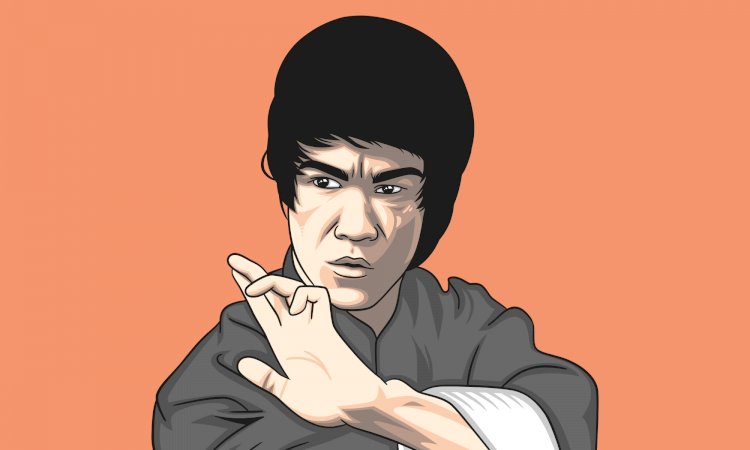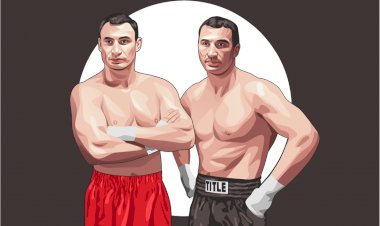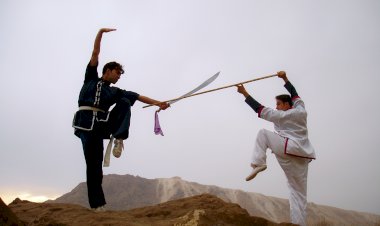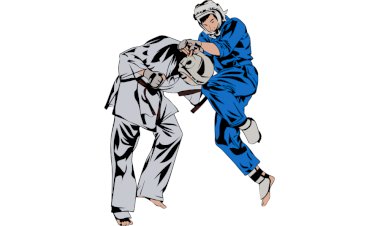Jeet Kune Do - The Art of the intercepting fist of Bruce Lee
Jeet Kune Do is the Chinese hybrid philosophy of martial arts that was founded and influenced by the martial arts legend, Bruce Lee. Although the styles of the system are varying between various trainers, its emphasis and purpose are the same. Jeet Kune Do is set to allow a person to use minimal effort to generate extreme speed in a fight and produce the most effect.

Name meaning: Jeet Kune Do is Chinese and means "The art of the intercepting fist"
Date of orgin: 1967
Country of origin: USA
Combat elements: Many punches and kicks and some throws
Weapons in use: None
Development of Jeet Kune Do
Innovative as he was, Bruce Lee wanted to develop a technique that would go beyond the limits of traditional martial arts at that time like Karate. In 1967, he came with a new system that was more realistic and focused on the fluid combat moves that a fighter can use in different combat situations. That said, the system allows fighters to go beyond the single style and adopt many others.
He always believed that the easy way of fighting is the right way. That said, Jeet Kune Do represents the system that requires minimum efforts and energy but it produces a huge effect.
The system incorporates boxing, Wing Chun, grappling and even some elements of fencing. Basically, Jeet Kune Do focuses on what works and what doesn’t work in a fight.
The principles and techniques
The main principle of the system is known as “Intercepting Fist” which allows a fighter to intercept the attackers’ movement and defend himself by using the offensive moves. Also, training systems are focusing on each fighter’s strengths and weaknesses. This way, trainers can create an individual martial arts plan for every fighter.
Now, let’s take a look at the main principles and techniques.
Be Like Water
“Be like water” principle is probably the most famous one and well known across the world. This philosophical and psychological approach focuses on the fighters’ ability to properly react in any given situation. In other words, a person must have high awareness and know when to attack – retreat or when to speed up or slow down. Also, the principle doesn’t focus just on fighting. It will enhance your life as well and give the ability to adapt to various changes and find appropriate solutions.
Economy of Motion
Everything about Jeet Kune Do is created around managing time and energy. The principle of economy of motion is to develop high efficiency in which the strikes will find the target and land in the least amount of time. Yet, they will produce high force and maximum damage. Further, a person must learn not to waste energy and perform natural movements in a disciplined way. Also, there is no space for complicated moves in Jeet Kune Do. A fighter must keep the moves simple and direct, without wasting energy on flashy moves.
In other words, why would you throw a wheel kick if a simple low kick or front kick can do the job just as good?
Jeet Kune Do focuses on Low kicks
Speaking of the kicks, Jeet Kune Do focuses on low kicks rather than high kicks. Like in Wing Chun, students learn how to target the opponents’ thighs, midsection, and knees. Lee believed that the low kicks are the hardest to defend and they are also saving energy and time as well. But, this is not a strict rule. Practitioners can also throw kicks above the midsection if they see the opening and opportunity to do so.
Simultaneous parrying and punching
In addition to the economy of motion, "simultaneous parrying and punching" focus on combining the defensive and attacking moves into one movement. This way, a person is minimizing the reaction time and increase the effectiveness. Lee believed that the “block” is a good way to stop the attack. But, a parry re-directs the attack and utilizes the attackers’ energy against them by creating the imbalance. This way, a Jeet Kune Do fighter uses much less energy and gives much less time to the attacker to react and defend the counterattacks. This concept is also known as “Intercepting Attacks”
Control of the centerline
During his Wing Chun days, Bruce Lee has learned important lessons about the importance of controlling the centerline and forces the attackers to strike from the outside in. By controlling and dominating the opponents’ centerline, the one actually controls the fight and exploits the attacker.
Three ranges of combat
According to Lee, other martial arts usually specialize at one or two ranges. Thus, he saw the room for improvement by creating Jeet Kune Do around three ranges: short/close, medium and long-range
Combat Realism
Lee wanted to include only the martial arts that have proven its effectiveness in real combat. He believed that “flowery techniques” look nice, but their effectiveness is very questionable. What’s more, these pre-arranged moves can fool fighters into a false sense of combat security. So, all the moves in Jeet Kune Do are proven in combat and can prepare a person for more realistic scenarios.
Fighting without fighting
Jeet Kune Do gained a lot of popularity when it was referenced in the Bruce Lee’s famous movie “Enter the Dragon”. When he was asked “What’s your style”, Lee replied “You can call it the art of fighting without fighting”
Even after his Bruce Lee’s death, Jeet Kune Do continued to evolve in the following decades. But unfortunately, we will never know how far the technique would go. That said, Jeet Kune Do continues to live on and is still relevant to this day. Some of the popular MMA fighters like George St. Pierre have mastered the Jeet Kune Do. GSP used various elements of the technique to distract his opponents and set up the takedowns more efficiently.
Context
In Jeet Kune Do there is a lot of beating and it has many similarities with Wing Chun and Xing Yi Quan. There are also similar techniques in boxing or kickboxing.
Articles by bushu.ch












